Additional notes (click to expand)
Medicinal
Raises calcium concentration in heart muscle. Contains digoxin which is used to treat cardiac failure and atrial fibrillation. Excess causes vomiting and xanthopsia. Leaves first used for ‘dropsy’ by Dr William Withering (1741-1799).
Oakeley, Dr. H.F. (2013). Medicines from RCP plants label list 5-2013.docx.
Prescription only medicine: digoxin
Digitalis lanata Digoxin, Lanatoside C. Digitalis purpurea, the Purple Foxglove, has been central in understanding how to use drugs to treat diseases as well as being the first successful treatment for the failing heart. In 1785 William Withering, a Fellow of this College, described use of dried leaves of the Purple Foxglove to treat dropsy, an illness in which water accumulates in the body because of inadequate pumping action of the heart. He showed that the dose had to be adjusted to suit each patient to avoid toxicity. Over the next 150 years doctors learnt how to standardise tablets of the dried leaf, called Digitalis, and which patients would benefit from their use. In 1930 Sidney Smith discovered digoxin in D. lanata, the Woolly Foxglove. As a pure chemical with the same actions it was simpler to manufacture and easier to control so it replaced the dried leaf in medical practice. The active substances in D. purpurea and D. lanata are called cardiac glycosides because they contain sugars and other molecules. D. lanata contains another compound, Lanatoside C, with similar actions. They are still used today for certain types of heart disease.
William Harvey and plant derived medicines currently used in cardiovascular medicine, Prof Michael de Swiet's Notes 2018
Other use
This, the ‘Grecian’ foxglove of Eastern Europe, is the source of the cardiac medicine digoxin. The use of the dried leaves of the purple foxglove, D. purpurea, for treating heart failure (then called ‘dropsy’, referring to the oedema which causes the legs, and occasionally the whole body, to swell up) was discovered by Dr William Withering after nine years of testing on his charity patients, and described in 1785 in An account of the foxglove. Digitalis purpurea contains many cardioactive glycosides which increase the efficiency of the heart, and the leaves were used until single chemicals, such as digoxin, were extracted from the leaves of D. lanata. Digoxin has the advantage of purity and not varying in strength according to the time of year. Withering recognised the toxic side effects of foxglove, including xanthopsia (objects appear yellow), slow heart rate, vomiting and diarrhoea. In the Medicinal Garden in the summer, Digitalis lanata is visited by little Anthophora bees which become stuporose and lie upside down in the flowers, seemingly unable to fly away when disturbed.
Oakeley, Dr. Henry. (2011). A Year in the Medicinal Garden of the Royal College of Physicians, revised edition. Royal College of Physicians, London.
link
Phytochemistry
Active principle: all parts: several cardenolides (purpurea glycoside, lanatoside, digitoxin, digoxin).
Wink, M. (2009). Mode of Action and toxicology of plant toxins and poisonous plants. Mitt. Julius Kuhn-Inst. 421:93-111. p.99
Toxicity
Class 1a. Extremely hazardous: cardiac glycosides inhibit Na+,K+-ATPase, typical cardiac glycoside
intoxication, vomiting, diarrhoea, gastroenteritis, severe headache, irregular heartbeat and pulse,
convulsions, CNS disturbance, cardiac arrest, sudden death.
Wink, M. (2009). Mode of Action and toxicology of plant toxins and poisonous plants. Mitt. Julius Kuhn-Inst. 421:93-111. p.99
Toxic due to cardiac glycosides that may derange cardiac rhythm and gastro-intestinal upsets.
Professor Anthony Dayan, 2022
Geographical distribution
- Europe, Eastern Europe, Ukraine
- Europe, Middle Europe, Hungary
- Europe, Southeastern Europe, Albania
- Europe, Southeastern Europe, Bulgaria
- Europe, Southeastern Europe, Greece
- Europe, Southeastern Europe, Romania
- Europe, Southeastern Europe, Yugoslavia
Podcast
Digitalis lanata Ehrh.
Family: PLANTAGINACEAEGenus: Digitalis
Species: lanata Ehrh.
Common names: Grecian Foxglove; Woolly Foxglove; Austrian Digitalis
Distribution summary: C. & E. Europe, Turkey
Habit: Perennial
Hardiness: H5 - Hardy; cold winter
Habitat: Lowland, open woodland, grassland, scrub and verges
Garden status: Currently grown
Garden location: Olive tree bed (O)
Flowering months: June, July
Reason for growing: Medicinal, toxic, prescription only medicine
.JPG)
.JPG)
.JPG)
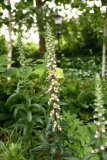

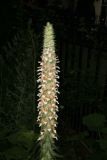
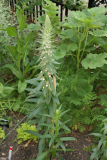
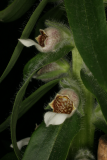
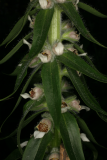
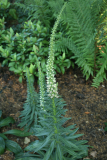
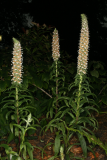
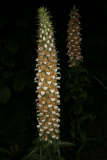

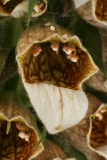
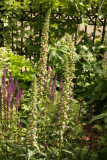
.JPG)

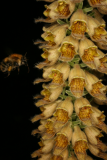
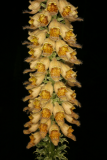


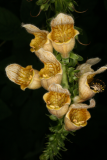
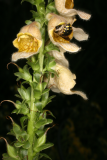
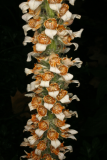
.JPG)